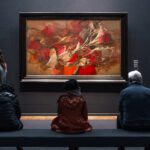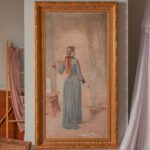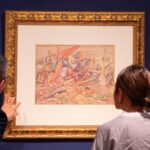The subject of the Mother and Child is one of the most enduring themes in visual art– a motif that deeply resonates and tugs at the heartstrings of Filipinos. Throughout its evolution, the only change this theme has seen is a shift in art styles and aesthetics.
The Mother and Child has been reimagined and recast under the hand of modern masters and contemporary artists alike. Indeed, it is highly likely for any one of them to have created at least one interpretation of this theme in their body of work.
The line up of this year’s The Well-Appointed Life ‘Important Philippine Art’ sale on 26 September is a prime example of the rich and diverse iterations of this theme.
Perhaps the most popular depiction of the Mother and Child is that of the Virgin Mary and the Infant Jesus. In a predominantly Catholic country like the Philippines, this image can be found everywhere. Typically, this icon is found hanging in churches or displayed with reverence on home altars; but it can also be found in unconventional spaces as well, such as in calendars or painted on walls and even on public utility vehicles!
National Artist Ang Kiukok applies a fresh and vibrant approach to the Mother and Child in Rosary Queen– a rare series that is featured in a major monograph on the artist.
There is a profound balance of lightness and splendid robustness to this painting– the abstract shapes like prisms add to the festive luminousness of the painting.
This whimsical depiction is fittingly titled, Mag-ina. Mauro Malang Santos, who was, in many ways, a self-taught artist, always used his mother’s maiden name to sign his work– this is the reason why the renowned painter is more commonly known simply as ‘Malang.’
In creating his own take on the Mother and Child, Malang incorporates an aspect of Filipino life and culture into his work. His exuberant use of colors can be seen as reflective of a fiery spirit. If you look closely, the fanciful faces in the painting closely resemble fruits. Malang could have possibly incorporated the old saying, “the apple doesn’t fall far from the tree,” into Mag-ina.
Macario Vitalis took inspiration from different modern art styles to create his own.
Here, he uses the Cubist technique to both emphasize and camouflage the emergence of the Mother & Child figure on the canvas. The blend in techniques to create this work can alternatively serve as a commentary for the obvious unseen – the universal truth, a mother’s unconditional love for her child.
Which of these three Mother and Child paintings is your favorite?
Whichever work catches your interest, they are all being offered together with over 100 works of ‘Important Philippine Art’ as part of The Well-Appointed Life’ live and online auction on Saturday 26 September, 2 pm. To view the entire catalogue, click here.











